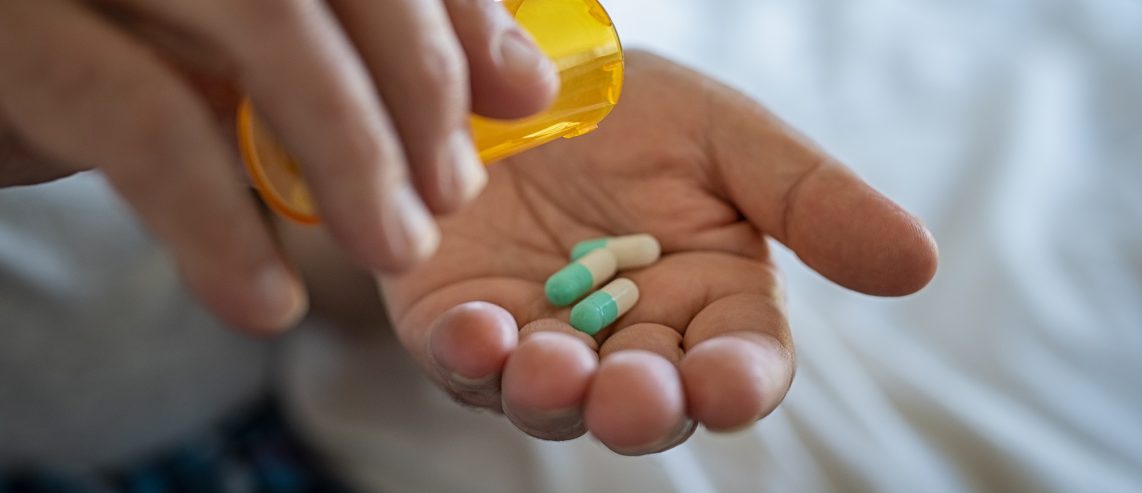The cause of most infections is usually a virus, a fungus, or bacteria. Many of these infections go away on their own, but doctors sometimes use antiviral, antibacterial, or antifungal medications to treat others. Medications that fight off a bacterial infection are antibiotics.
But sometimes a bacterial infection doesn’t get better when doctors treat it with antibiotics. This can happen because the bacteria can win against the drugs designed to kill them. Scientists call this problem antibiotic resistance.
What Is Antibiotic Resistance?
Scientists have developed more than 100 antibiotics since Alexander Fleming discovered the first antibiotic — penicillin — nearly a century ago. But like all living things, bacteria evolve over time by adapting to survive in new environments. Within the first decade of penicillin’s use, at least one bacteria type developed the ability to survive penicillin.
This ability to resist the effects of antibiotics is antibiotic resistance. Scientists respond to antibiotic resistance by developing new antibiotics — and then the bacteria further evolve to resist these new drugs. This race between scientists and bacteria has been going on almost as long as antibiotics have existed.
In recent decades, bacteria have been winning more often. Scientists have run out of new antibiotics, so antibiotic resistance has become a bigger problem. According to the Food and Drug Administration (FDA), nearly all bacteria have become resistant to at least one antibiotic.
As a bacteria type becomes resistant to more antibiotics, it becomes harder to treat those infections. One example is infections caused by methicillin-resistant Staphylococcus aureus, or MRSA. Since the old antibiotic used to treat staph infections doesn’t work anymore, doctors must use different stronger antibiotics instead.
Some bacteria have become resistant to all known antibiotics. In these cases, doctors may not be able to cure the infection with antibiotics.
Nearly five million deaths across the world in 2019 were related to antibiotic resistance, according to a 2022 study. In the U.S., more than 2.8 million antibiotic-resistant infections occur each year, according to the CDC. These infections kill more than 35,000 people every year.
Never Miss a Beat!
Subscribe to Our HealthBeat Newsletter!
Thank you for subscribing!
You can now select the specific newsletters you'd like to receive.
You are already subscribed.
Subscribe to more newsletters in our email preference center.
Sorry, an error occurred. Please try again later.
Get Healthy Tips Sent to Your Phone!
When Does Antibiotic Resistance Happen?
Antibiotic resistance happens when bacteria become capable of defeating antibiotics that are supposed to kill them. Then these germs keep growing instead of dying, and the infection spreads.
Resistance can happen in several different ways. Some bacteria are naturally resistant to certain antibiotics. Others develop resistance when exposed to antibiotics in one of two ways.
As bacteria multiply, mutations (or changes) occur in the bacteria’s DNA. Sometimes these mutations make it easier for the bacteria to resist the antibiotic. As the bacteria continue growing, those without the helpful mutation die while those with the mutation grow and take over.
Bacteria can also develop resistance against antibiotics by exchanging DNA with other species of bacteria that are already resistant.
What Causes Antibiotic Resistance?
Antibiotic resistance is a natural process, but some human activities speed up the process and make the problem worse:
- Overusing antibiotics when they aren’t needed, such as for viral infections — or bacterial infections that will clear up on their own.
- Improper use of antibiotics, such as forgetting to take them, stopping treatment too soon, or using the wrong antibiotics for an infection.
- Use of antibiotics in agriculture and farm animals.
- Not treating a bacterial infection that then develops resistance and passes on to someone else.
How Do Doctors Treat Antibiotic Resistance?
Antibiotic resistance is a global public health problem that government agencies across the world are working to fix. In the U.S., 10 different federal agencies began working together in 1999 to develop and carry out plans to fight antibiotic resistance.
Meanwhile, doctors must use different drugs to treat infections if the bacteria causing them can resist the usual drugs. When bacteria become resistant to one antibiotic, doctors use a different antibiotic that the bacteria can’t resist yet. Sometimes doctors must use multiple antibiotics together against a bacterial infection.
If oral antibiotics are not effective against an antibiotic-resistant bacteria, doctors may prescribe antibiotics through an IV.
“There are many points in this article that explain why antibiotics require a prescription from a professional. Overuse and misuse of antibiotics are very serious health risks to human beings. Listen to your doctor if they say antibiotics are not required and follow the instructions closely when they are prescribed,” says Jonathan Weiss, MD, of Renaissance Family Practice-UPMC.
Scientists are working on finding other ways to fight bacteria that are resistant to antibiotics. One promising area of research is using a type of virus to kill the bacteria.
How Long Does Antibiotic Resistance Last?
Once bacteria develop the ability to resist an antibiotic, they don’t lose that ability. Antibiotic resistance will be an ongoing problem in medicine for years to come. But doctors still have the ability to cure many antibiotic-resistant infections.
How long an antibiotic-resistant infection lasts depends on the bacteria causing it and what antibiotics are available. For example, treating MRSA can take anywhere from five to 14 days. Other infections may need two to six weeks for treatment to work.
Who Is at Risk for Antibiotic-Resistant Infections?
Anyone can develop an infection from bacteria or fungi that are resistant to antibiotics. But some people have a greater risk of developing an infection than others:
- Children.
- People with cancer.
- People over the age of 60.
- People with weakened immune systems.
- Organ transplant recipients.
- People undergoing complex surgeries, chemotherapy, dialysis, and some other procedures.
How Can I Avoid Antibiotic-Resistant Infections?
You can take several steps to reduce your risk and others’ risk of infections from antibiotic-resistant bacteria:
- Regularly wash your hands.
- Get your recommended vaccines. This may lower your risk of bacterial infections and also may help prevent diseases that can weaken your immune system.
- Clean wounds and broken skin right away with soap and water.
- Cover your mouth when coughing or sneezing.
- Stay home when sick.
- Avoid being around people who are sick.
- Follow food safety guidelines when preparing and storing food.
- Protect yourself from sexually transmitted infections during sexual activity.
There are also things you can do to help fight antibiotic resistance more broadly:
- Follow your doctor’s directions on using antibiotics.
- Do not share your medicine with others.
- Only use antibiotics when recommended by a doctor.
- Do not use someone else’s antibiotics.
- Dispose of unused antibiotics at a pharmacy instead of the trash or saving them.
- Avoid using bandages that include antibiotics in them.
- Buy meat and fast-food items from companies that have stopped using antibiotics.
Sources
2019 AR Threats Report. National Center for Emerging and Zoonotic Infectious Diseases (NCEZID), Division of Healthcare Quality Promotion (DHQP),Centers for Disease Control and Prevention. Link
Abdul H. Siddiqui and Janak Koirala. Methicillin Resistant Staphylococcus Aureus. July 18, 2022. STAT Pearls. Link
Actions to Fight Antimicrobial Resistance. National Center for Emerging and Zoonotic Infectious Diseases (NCEZID), Division of Healthcare Quality Promotion (DHQP), Centers for Disease Control and Prevention. Link
Antibiotic Resistance Action Center. Milken Institute School of Public Health. George Washington University. Link
Antibiotic resistance factsheet. World Health Organization. Link
Antimicrobial resistance collaborators. Global burden of bacterial antimicrobial resistance in 2019: a systematic analysis. Feb. 12, 2022. The Lancet. Link
Antimicrobial Resistance Questions and Answers. National Center for Emerging and Zoonotic Infectious Diseases (NCEZID), Division of Healthcare Quality Promotion (DHQP), Centers for Disease Control and Prevention. Link
Battle of the Bugs: Fighting Antibiotic Resistance. U.S. Food and Drug Administration. Link
C. Lee Ventola. The Antibiotic Resistance Crisis. April 2015. Pharmacy and Therapeutics. Link
Julian Davies. Where have All the Antibiotics Gone? Sept-Oct 2006. Canadian Journal of Infectious Diseases and Medical Microbiology. Link
Keep Food Safe! Food Safety Basics. Food Safety and Inspection Service. U.S. Department of Agriculture. Link
Major Food Companies Committed to Reducing Antibiotic Use. The Pew Charitable Trusts. July 2016. Link
Siang Yong Tan and Yvonne Tatsumura. Alexander Fleming (1881–1955): Discoverer of penicillin. July 2015. Singapore Medical Journal. Link
Using viruses to treat antibiotic-resistant bacterial infections. NIH Research Matters. June 28, 2022. National Institutes of Health. Link
About Primary Care
The relationship with a patient and their primary care doctor can be extremely valuable, and that’s what you get with UPMC Primary Care. When you work with a primary care physician (PCP), you develop a lasting relationship. Your doctor will get to know you and your history and can plan your treatments accordingly. Our PCPs offer a variety of services, including preventive care and treatment for both urgent and chronic conditions. With dozens of UPMC Primary Care locations across our network of care, you can find a PCP close to you. Schedule an appointment today.

